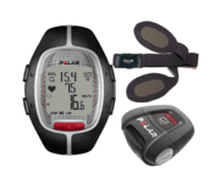According to Dr. Joe Pagan, cardiovascular health is essential for exercising horses. The exercising horse depends on a number of different physiological systems to supply fuel to the muscles and remove waste products during exercise.

Importance of heart rate monitor in conditioning horses
Measuring the speed at which a horse can exercise at a specific heart rate gives a good indication of its relative fitness, and a low-cost heart rate monitor enables horsemen to monitor training progress.
Any one of these systems may limit the horse’s ability to work. The horse’s well-developed cardiovascular system is among the most important for supporting performance.
Once oxygen has entered the bloodstream from the lungs, it must be transported to working muscles, and waste products must also be removed. Cardiac output is a measure of how much blood the heart can move per minute. Cardiac output is the product of heart rate multiplied by stroke volume.
The heart rate in healthy resting horses varies from 25-45 beats per minute and averages around 32-35. Horses have a maximal HR of 220-250 beats per minute. The stroke volume is around 0.8 - 1.2 liters per beat.
Therefore, at maximal exercise, cardiac output can reach over 250 liters per minute. This is comparable to pumping a 55-gallon drum of blood through the heart each minute. This massive cardiac output is one reason horses are such good natural athletes.
As a horse becomes more fit, stroke volume tends to increase and heart rate at a particular speed decreases. Measuring the speed at which a horse can exercise at a specific heart rate (i.e., 180 or 200) gives a good indication of its relative fitness. Low-cost heart rate monitors are available that enable horsemen to monitor their horse’s training progress in the field.
Oxygen is carried through the blood stream in red blood cells, so the number of these cells can affect performance. Horses have the ability to store as many as half of their red blood cells in the spleen when they are not exercising.
When strenuous exercise begins, these cells are mobilized into the bloodstream where they can quickly double the blood’s oxygen-carrying capacity. A deficiency of red blood cells (anemia) could possibly limit performance, but this usually only happens when the horse has suffered some type of blood loss, infection, or illness.
In general, making sure that horses are fed a well-balanced diet for their workload and that they receive sufficient exercise to maintain good physical condition is important for cardiovascular health. In addition, knowing your horse's heart rate can help you determine just how healthy the horse is.
Research has shown that by graphing the horse's heart rate response to an exercise done at a constant speed over a period of time, it is possible to know if an injury occurs. When the horse is injured, ill, or fatigued, the heart rate will be higher than expected, based on prior monitoring results. As a horse becomes more fit, the heart rate at a constant speed decreases. If the heart rate suddenly increases sharply, it is probable that an injury has occurred.
